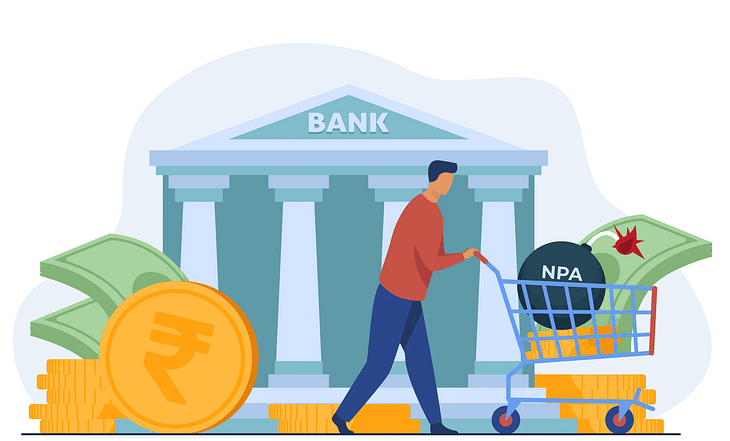Banks are Sitting On A Bad Loan Time Bomb!

Indian Banks have performed unexpectedly and exceptionally well in the second quarter(Q2) of this financial year. Markets too were not sure of why the big banks in India are posting such good profits, reduction in bad loans, and improvement in asset quality. BANKNIFTY, the benchmark index for all the retail banks in India, too didn’t reflect for long on the profits that the banks were posting. This kind of exceptional performance wasn’t expected since India’s 23.9% April-June GDP contraction, the damage done to businesses by the COVID-19 Pandemic, and the RBI being vigilant on rising Bad Loans/Non-Performing Assets(NPAs).
The reason is clear for these high profit numbers. The banks are sitting on an NPA(Non-Performing Asset) time bomb, which will explode sooner or later.
- Why Are The Banks Posting Such Good Profits?
- What is The NPA Time Bomb?
- What Next?
Why Are The Banks Posting Such Good Profits?
In the second quarter, ICICI Banks has posted a profit of 242.46% (YoY). HDFC Bank has posted a profit of 15% (YoY), RBL and IDFC First Bank have posted profits of 185% and 116% respectively. None of the 12 listed PSU banks have posted a loss. Even banks which have posted consecutive losses earlier have posted profits in this ‘stressed’ quarter. All of this, while the ill-effects of the COVID-19 pandemic still continue to impact businesses in India.
There are mainly two reasons for such good profits.
- Net Interest Income: The Net Interest Income is the difference between the interest paid out and interest received by banks. The Net Interest Income has increased substantially. This means that banks received more interest money than the money it gave out to account holders, lenders, etc. As the economy gets back to normalcy, businesses and people are more likely to pay back the money that they had borrowed from these banks.
- Improved Asset Quality and Reduced Provisions: The banks have seen an improved asset quality because they are vigilant and cautious while lending money. Banks aren’t lending money as freely as they did before. This decreases the NPA to some extent. The banks have to set aside “provisions” for these NPAs. Provisions are funds set aside by a company as current liabilities to pay for anticipated future losses. These provisions were reduced to almost half of what they were in the last quarter in many banks. The amount of provisions reduced coupled with reduced NPAs gets added to the companies’ book of accounts, thus increasing the profits.
What is The NPA Time Bomb?
India has been struggling with rising NPAs, low borrowings, and a low growth rate even before the COVID-19 pandemic came around. The RBI has been working on these problems for a long time through regulation and open market operations. It hasd implemented Long Term Repo Operations or LTRO to boost borrowing. The RBI has also announced frequent moratoriums and debt restructuring schemes for Micro, Small & Medium Enterprises(MSMEs).
This is where the problem arises. Banks were asked not to classify many loans as Non-Performing Assets(NPA) in case somebody defaulted during the moratorium period. The loan moratorium and debt restructuring schemes have been around way before the COVID-19 lockdown period. The Supreme Court has said that accounts that were not declared as NPAs till August 31, shall not be declared NPA till further orders. As said before, reduced NPA equals reduced provisions, equals more profit. The impact of NPAs has just been delayed and not written off.
SBI has funds worth Rs 8.2 lakh crores under the moratorium scheme. Kotak Mahindra Bank has Rs 9,000 crores, ICICI Bank has Rs 14,000 crores and HDFC Bank has 15,000 crores worth of loans which are under debt restructuring schemes or moratoriums. A huge chunk of them may turn out to be Non Performing Assets (NPAs), all at once. This will lead to banks keeping higher provisions aside which will eat into the operating profits of the company. You can expect an explosion of NPAs somewhere around Q3 FY 2020-21.
What Next?
The government has announced a waiver on the interest-on-interest on the loans availed for the period between 1st March and 31st August for an amount of upto Rs 2 crores. This might be a slight relief for borrowers and reduces the burden of NPAs on the banks.
Apart from this, there has been not much activity by the centre or the RBI to mitigate the burden of the bad debt that will arise in the future. One shall prepare for a turbulent ride for the banks in Q3 of this financial year.


Post your comment
No comments to display